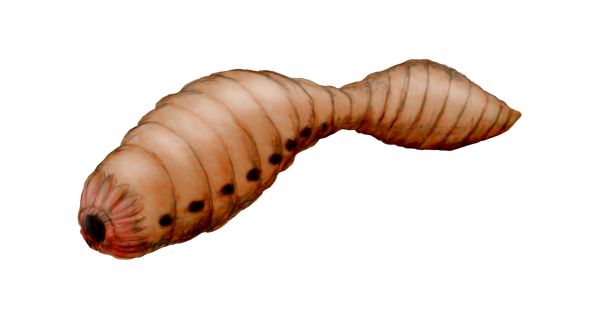|
Beidazoon
''Beidazoon venustum'' is a deuterostome from the deuterostome group Vetulicolia. It originates from the lower Cambrian Chengjiang biota of Yunnan Province, China. ''Beidazoon'' was a marine organism discovered by Degan Shu in 2005. The ''Beidazoon venustus'' had a hard outer shell similar to the ''Vetulicola ''Vetulicola'' is an extinct genus of marine animal from the Cambrian of China. It is the eponymous member of the enigmatic phylum Vetulicolia, which is of uncertain affinities but may belong to the deuterostomes. Description The type species ...''. ''Beidazoon'' had a single band mouth. Its tail is asymmetrical and composed of a hard shell extending from the upper posterior, an axial lobe of seven segments, and a ventral lobe with four or five segments. Shu suggests that the ''Beidazoon's'' shell was "beautifully ornamented with numerous nodes". References {{Taxonbar, from=Q85746366 Vetulicolia ... [...More Info...] [...Related Items...] OR: [Wikipedia] [Google] [Baidu] |
Vetulicolia
VetulicoliaThe taxon name, Vetulocolia, is derived from the type genus, ''Vetulicola'', which is a compound Latin word composed of ''vetuli'' "old" and ''cola'' "inhabitant". is a taxon (either phylum or subphylum in rank) encompassing several extinct Cambrian organisms. The vetulicolian body comprises two parts: a voluminous anterior forebody, tipped with an anteriorly positioned mouth and lined with a row of five round to oval-shaped features on each lateral side, which have been interpreted as gills (or at least openings in the vicinity of the pharynx); and a posterior section that primitively comprises seven segments and functions as a tail. All vetulicolians lack preserved appendages of any kind, having no legs, feelers or even eyes. The area where the anterior and posterior parts join is constricted. Their affinity has been uncertain; they have been considered to represent stem- and crown-group arthropods, stem-group vertebrates, and early deuterostomes. The general scienti ... [...More Info...] [...Related Items...] OR: [Wikipedia] [Google] [Baidu] |
Deuterostome
Deuterostomia (; in Greek) are animals typically characterized by their anus forming before their mouth during embryonic development. The group's sister clade is Protostomia, animals whose digestive tract development is more varied. Some examples of deuterostomes include vertebrates (and thus humans), sea stars, and crinoids. In deuterostomy, the developing embryo's first opening (the blastopore) becomes the anus, while the mouth is formed at a different site later on. This was initially the group's distinguishing characteristic, but deuterostomy has since been discovered among protostomes as well. This group is also known as enterocoelomates, because their coelom develops through enterocoely. The three major clades of deuterostomes are Chordata (e.g. vertebrates), Echinodermata (e.g. starfish), and Hemichordata (e.g. acorn worms). Together with Protostomia and their out-group Xenacoelomorpha, these compose the Bilateria, animals with bilateral symmetry and three germ layers. ... [...More Info...] [...Related Items...] OR: [Wikipedia] [Google] [Baidu] |
Vetulicola
''Vetulicola'' is an extinct genus of marine animal from the Cambrian of China. It is the eponymous member of the enigmatic phylum Vetulicolia, which is of uncertain affinities but may belong to the deuterostomes. Description The type species, ''Vetulicola cuneata'' (Hou, 1987) has a body composed of two distinct parts of approximately equal length. The anterior part is rectangular with a carapace-like structure of four rigid cuticular plates, with a large mouth at the front end. The posterior section is slender, strongly cuticularised and placed dorsally. Paired openings connecting the pharynx to the outside run down the sides. These features are interpreted as possible primitive gill slits. ''Vetulicola cuneata'' could be up to 9 cm long. The ''Vetulicola'' are thought to have been swimmers that were either filter feeders or detritivores. Other ''Vetulicola'' species described are ''Vetulicola rectangulata'' (Luo & Hou, 1999), ''V. gantoucunensis'' (Luo et al., 2005) ... [...More Info...] [...Related Items...] OR: [Wikipedia] [Google] [Baidu] |
